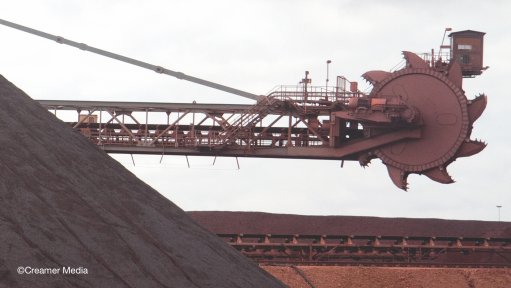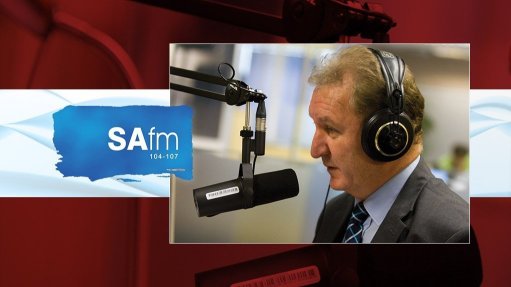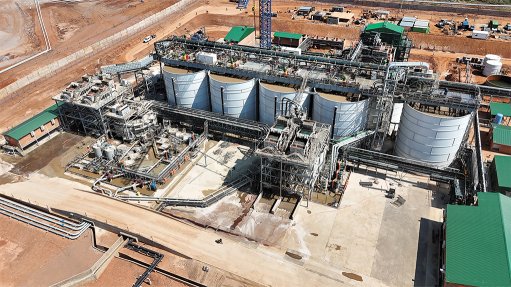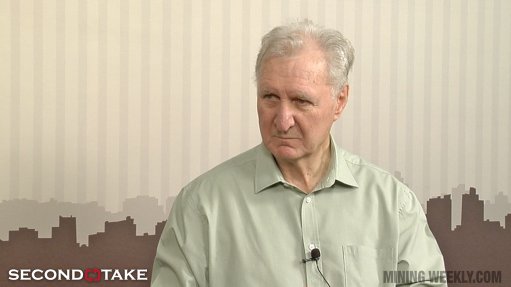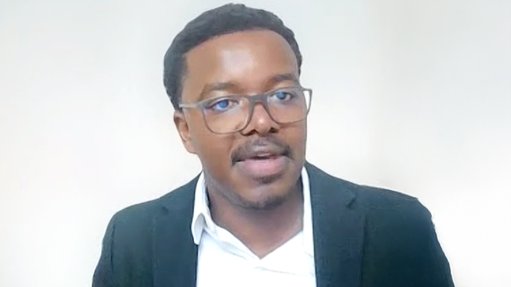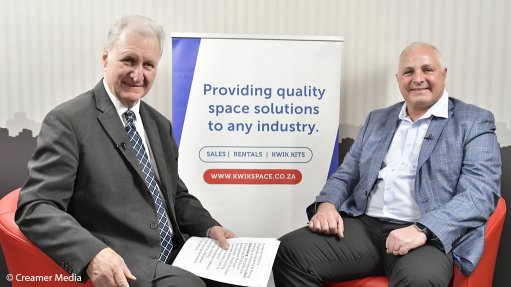Instil portable skills to assist economic development post closure – consultancy

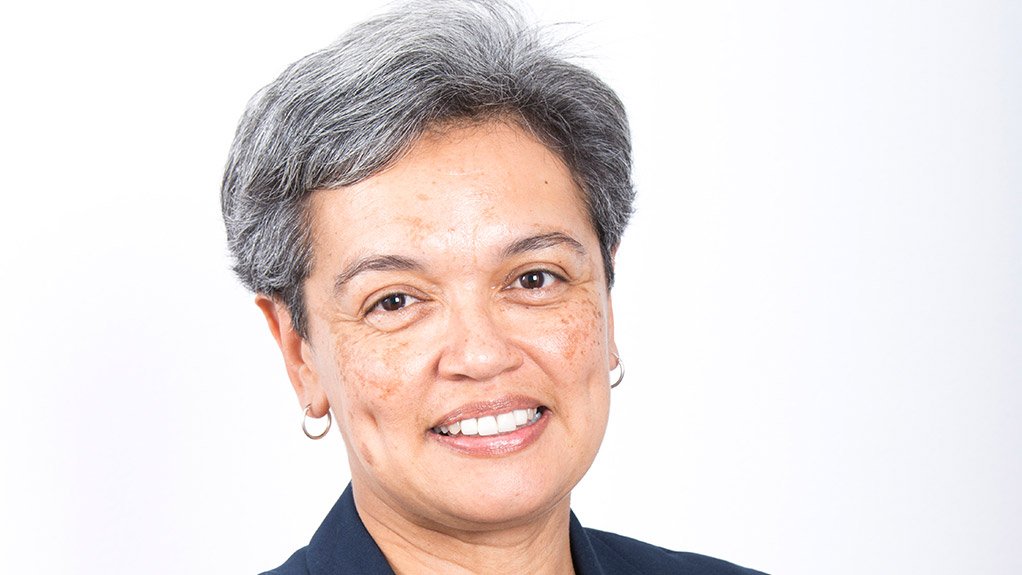

JANINE EPSIN ompanies should approach closure with economic sustainability in mind
WALDO ADAMS When mines close, it leaves many workers without jobs in towns where secondary economic activities arose from, and are reliant upon, opportunities created by the mine
Mining companies’ social and labour plans (SLPs) should incorporate initiatives or programmes aimed at reskilling workers and uplifting community members through the development of portable skills, says socioeconomic development facilitator Economic Development Solutions (EDS) MD Janine Espin.
EDS projects executive director Waldo Adams notes that, while mining is a corner- stone for the South African economy, resources are finite and orebodies cannot be mined forever.
Adams explains that the communities that develop around mining operations tend to be overly reliant on the mine for the duration of its life. “When mines close, it leaves many workers without jobs in towns where secondary economic activities arose from, and are reliant upon, opportunities created by the mine.”
As such, he suggests that every mining company includes mechanisms to ameliorate the social and economic impact on individuals, regions and economies where retrenchment or inevitable closure is certain.
“Because mine closures affect so many people, mining companies have to take some responsibility for the opportunities they create and then take away. For instance, mines can try to ensure that workers who are retrenched are educated by the mine in other skills, portable skills, so that they can search for work elsewhere once the mine is closed,” says Adams.
Espin adds: “My perception is that most mines are upskilling their people – in terms of ensuring that they can advance up the corporate ladder or adapt to new technologies and methodologies – but not reskilling.”
She says that some mining companies employ a “moot” tickbox approach to skills development implementing mining or entrepreneurial skills development programmes for employees and community members who cannot be employed at a discontinued mine, and/or have no entrepreneurial inclination.
Further, Espin points out that enterprise development initiatives should also be aimed at diversifying and developing the local economy.
Adams comments that, while it is natural that mining companies look to empower and uplift companies that feed into their supply chain, “enterprise development is not necessarily meant to focus on mining suppliers alone”, and since mines already have an obligation to spend on enterprise and supplier development they should try to support projects that will assist in the longevity of the host communities, post mining.
He lauds companies that offer skills courses aimed at producing qualified tradesmen, as these portable skills are “pretty much guaranteed a job anywhere in the country”.
Moreover, not only can mining companies use these tradesmen (electricians, plumbers, mechanics) on and around their operations, but these people have viable job opportunities in industries beyond mining.
Espin adds that companies should try and open up these courses to the impacted and affected communities as well as including these initiatives in their social and labour plan (SLP) local economic development programmes.
She comments that implementing reskilling programmes would go a long way in addressing the illegal mining issue.
“Zama-zamas exist simply because mining is all they know. When the mines close, communities are left absolutely isolated . . . for some, mining is all they know . . . and there is obviously a market for these minerals. In many instances, an entire secondary supply chain develops to support these illegal activities, but it comes from desperation as it’s the only way that communities can generate some kind of income.”
Espin says that, while portable skills are important, it can often perpetuate the migration of workers, to the detriment of the former mining communities. As such, companies should also promote the use of these skills in ways that ensure that the trainee need not relocate, and, moreover, complements the needs of the community. “Welders, for example, can make structures (gates, art installations) for the local community. Mechanics can service cars rather than trucks and so on.”
She also emphasises the importance of community engagement. Espin states that companies should approach closure with sustainability in mind, and that “sustainability needs to be linked with the immediate geological and physical environment.” She suggests that initiatives need to correlate with the mine’s physical location, with, for instance, companies in rural places implementing programmes and infrastructure to purify mine water for agricultural purposes, whereas mines closer to urban environment may rehabilitate land areas for low-cost housing or old workshops can be converted into enterprise development hubs.
However, she stresses that companies must understand what the impacted and affected communities want and/or need and should coordinate with local government and other local mining companies/industries to ensure that projects meet those needs and are not unnecessarily duplicated.
Adams adds that SLPs must be re-evaluated every five years, and, while there is no current obligation to do so, mining companies can and should amend an SLP that is in force, where the needs of the community have shifted.
About EDS
Espin explains that EDS works across multi- ple sectors, including the renewable energy and mining sectors, acting in an advisory capacity on issues pertaining to community engagement, SLP programme implementation, Economic Development reporting and programme implementation management for companies with projects with finite lives.
“Through mediated discussions between the company and the impacted and host communities, we can identify what types of corporate social investment, enterprise development or community initiatives can work as well as what the communities want and need . . . and because we’re doing it through a conversation, companies already engender some semblance of community buy-in.”
This enables the implementation of initiatives and programmes that are agreed upon by all parties, ones that are feasible and practical, given the available budgets and other constraints. Aside from planning these “implementable” projects from concept through to the companies’ eventual exit, EDS also facilitates engagements and buy-in from municipalities and other relevant government departments and programmes.
“With SLPs, mines need to plan from the outset, for post closure, including setting aside budgets for rehabilitation of the mine, resolving water and waste issues, and reskilling staff as well as community members for alternative suitable employment that is not necessarily related to the mining sector,” says Espin. She concludes that EDS can assist in ensuring that mining companies and the affected communities both benefit from inevitably continuous interaction.
Comments
Press Office
Announcements
What's On
Subscribe to improve your user experience...
Option 1 (equivalent of R125 a month):
Receive a weekly copy of Creamer Media's Engineering News & Mining Weekly magazine
(print copy for those in South Africa and e-magazine for those outside of South Africa)
Receive daily email newsletters
Access to full search results
Access archive of magazine back copies
Access to Projects in Progress
Access to ONE Research Report of your choice in PDF format
Option 2 (equivalent of R375 a month):
All benefits from Option 1
PLUS
Access to Creamer Media's Research Channel Africa for ALL Research Reports, in PDF format, on various industrial and mining sectors
including Electricity; Water; Energy Transition; Hydrogen; Roads, Rail and Ports; Coal; Gold; Platinum; Battery Metals; etc.
Already a subscriber?
Forgotten your password?
Receive weekly copy of Creamer Media's Engineering News & Mining Weekly magazine (print copy for those in South Africa and e-magazine for those outside of South Africa)
➕
Recieve daily email newsletters
➕
Access to full search results
➕
Access archive of magazine back copies
➕
Access to Projects in Progress
➕
Access to ONE Research Report of your choice in PDF format
RESEARCH CHANNEL AFRICA
R4500 (equivalent of R375 a month)
SUBSCRIBEAll benefits from Option 1
➕
Access to Creamer Media's Research Channel Africa for ALL Research Reports on various industrial and mining sectors, in PDF format, including on:
Electricity
➕
Water
➕
Energy Transition
➕
Hydrogen
➕
Roads, Rail and Ports
➕
Coal
➕
Gold
➕
Platinum
➕
Battery Metals
➕
etc.
Receive all benefits from Option 1 or Option 2 delivered to numerous people at your company
➕
Multiple User names and Passwords for simultaneous log-ins
➕
Intranet integration access to all in your organisation








